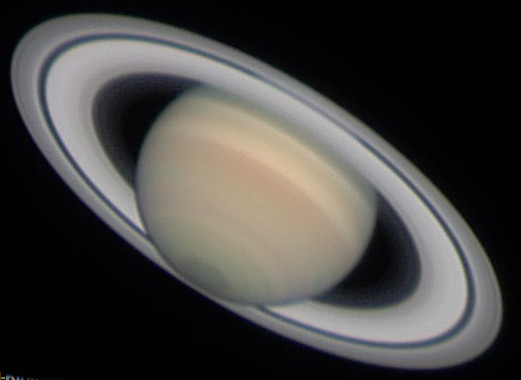2015 May 17
Saturn at opposition

Saturn will be at opposition on 2015 May 23 in the constellation of Libra near to the border with Scorpius and will be well placed for observers in the southern hemisphere and equatorial regions. However for north temperate observers, such as in the UK it will be rather low even when on the meridian.
Despite this, it will still be well worth observing.
The north face of the rings is inclined towards the Earth by around 24 degrees and consequently they hide much of the southern hemisphere. Saturn reaches an opposition magnitude of 0.0 which in part is due to the reflectivity of the rings and their high inclination.
The rings will appear ~ 42 arc seconds at opposition and they will be a fine sight even in a small telescope. With good seeing, visually a small telescope should reveal Ring A and B and the Cassini’s Division. Ring C may also be visible where it crosses the planet.
At opposition, the shadow of the globe onto the rings is hidden behind the planet. However after opposition, this shadow will become visible near the preceding limb of the planet, where the rings go behind the planet. For a few days either side of opposition, a brightening of the rings may be detected (the opposition or Seeliger effect).
The planet’s equatorial diameter will be 18.5 arcseconds across at opposition and a small telescope may show the brighter equatorial region and the darker North Equatorial belt. Larger instruments may reveal more belts with good seeing. Very high resolution amateur observations have detected some small bright storms plus the long lived dark vortex at high northern hemisphere latitudes.
Saturn has a large number of satellites and its largest, Titan should be visible visually in a small telescope as should Rhea and Iapetus (when at its brightest). Tethys and Dione will be more difficult for north temperate latitude observers due to the planet’s low altitude and are easier to detect when near elongation.
All observations submitted to the Saturn section will be welcome.
Mike Foulkes, Saturn Section Director
| The British Astronomical Association supports amateur astronomers around the UK and the rest of the world. Find out more about the BAA or join us. |
